2.1 and 2.2: Population Distribution & Density: Effects on Society and Environment
1/25
Earn XP
Description and Tags
AP HUG Unit 2 Flashcards
Name | Mastery | Learn | Test | Matching | Spaced |
|---|
No study sessions yet.
26 Terms
How do population distribution and density affect society and the environment?
They impact political, economic, and social processes, including the provision of services like medical care.
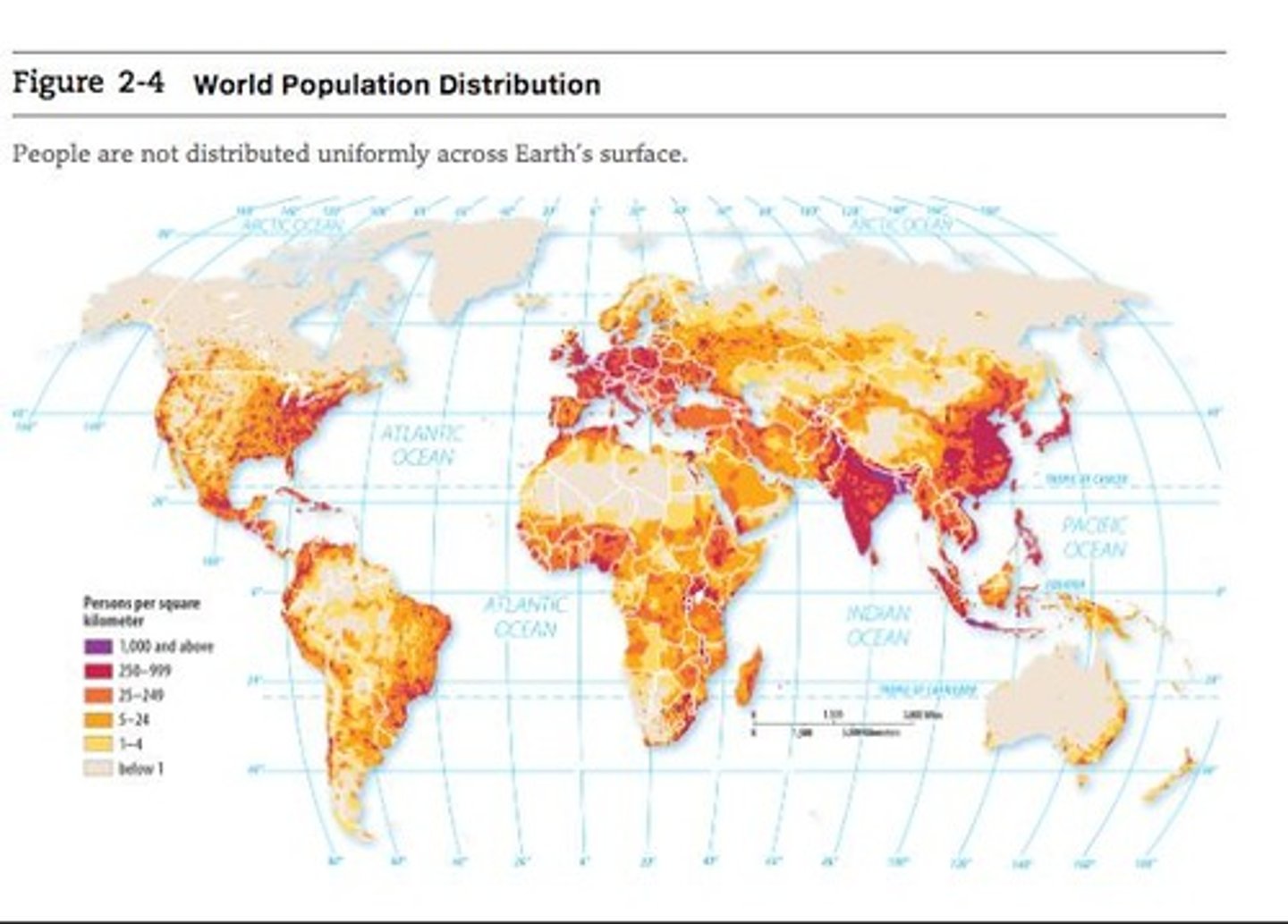
What is carrying capacity?
The maximum population size an environment can sustain without damaging resources.
What are the social impacts of high population density?
It affects access to housing, jobs, water, sanitation, medical care, and public services.
Why is it easier to provide services to clustered populations?
Due to less distance and travel required compared to dispersed populations.
What economic factors are influenced by population distribution?
Competition for jobs, urbanization, and uneven development.
What political aspect is affected by population distribution?
Representation in government and the drawing of electoral districts.
What environmental issues arise from high population density?
Air and water pollution, depletion of natural resources, and excessive waste.
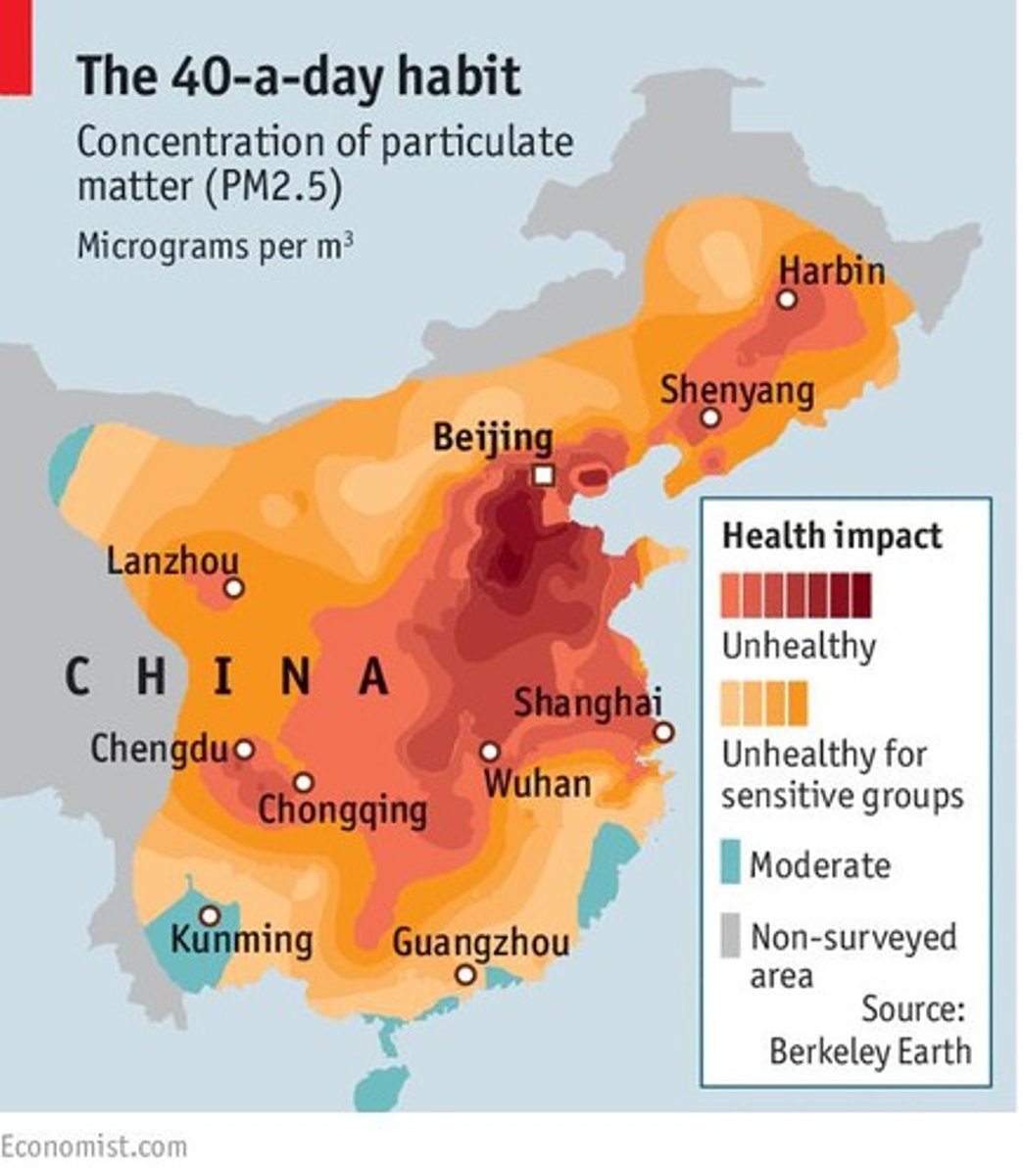
What physical features influence population distribution?
Climate, landforms, and water bodies.
What human factors influence population distribution?
Culture, economics, history, and politics.
What are the three methods geographers use to calculate population density?
Arithmetic, physiological, and agricultural.
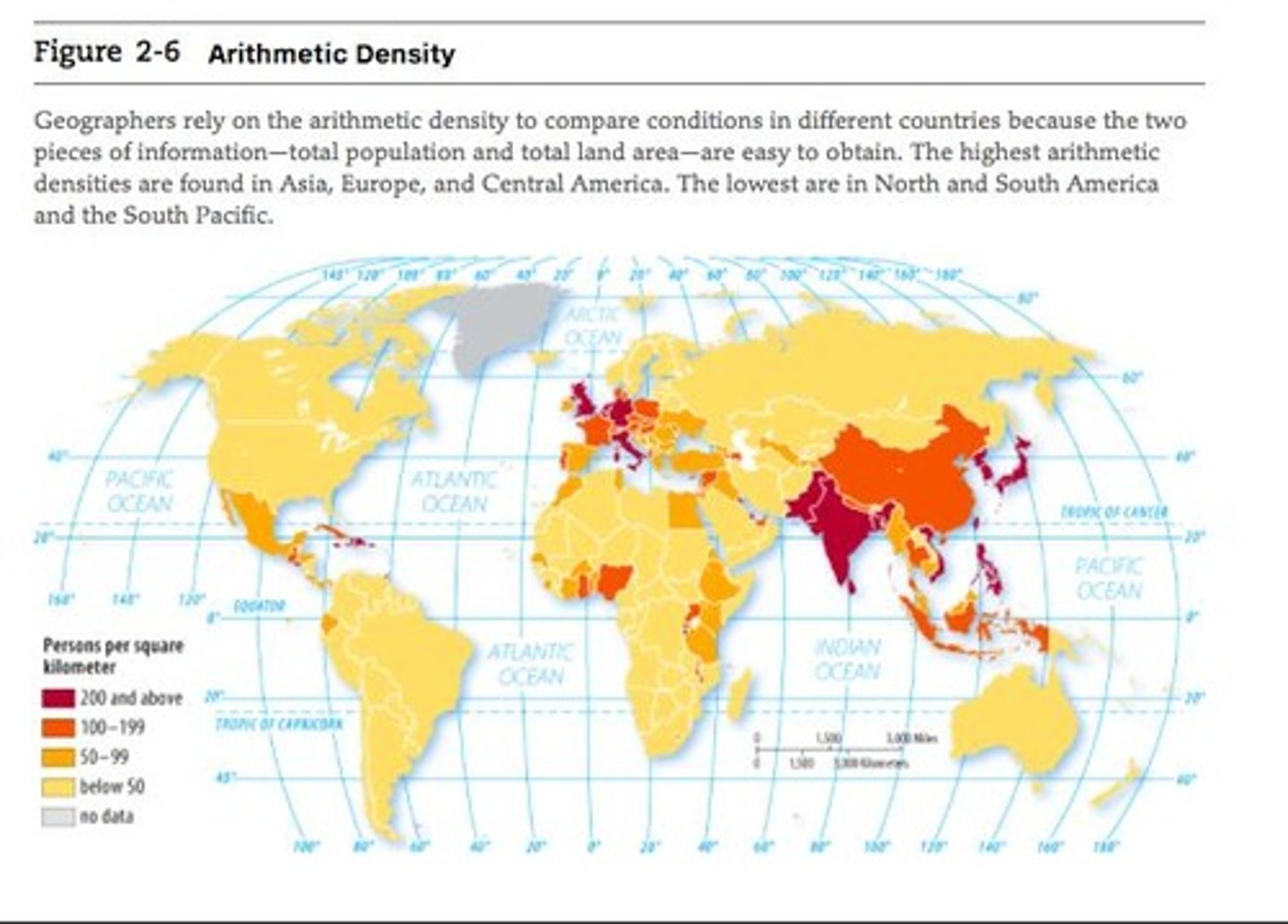
What does the arithmetic method of calculating population density use?
Total population divided by land area (sq. mi).
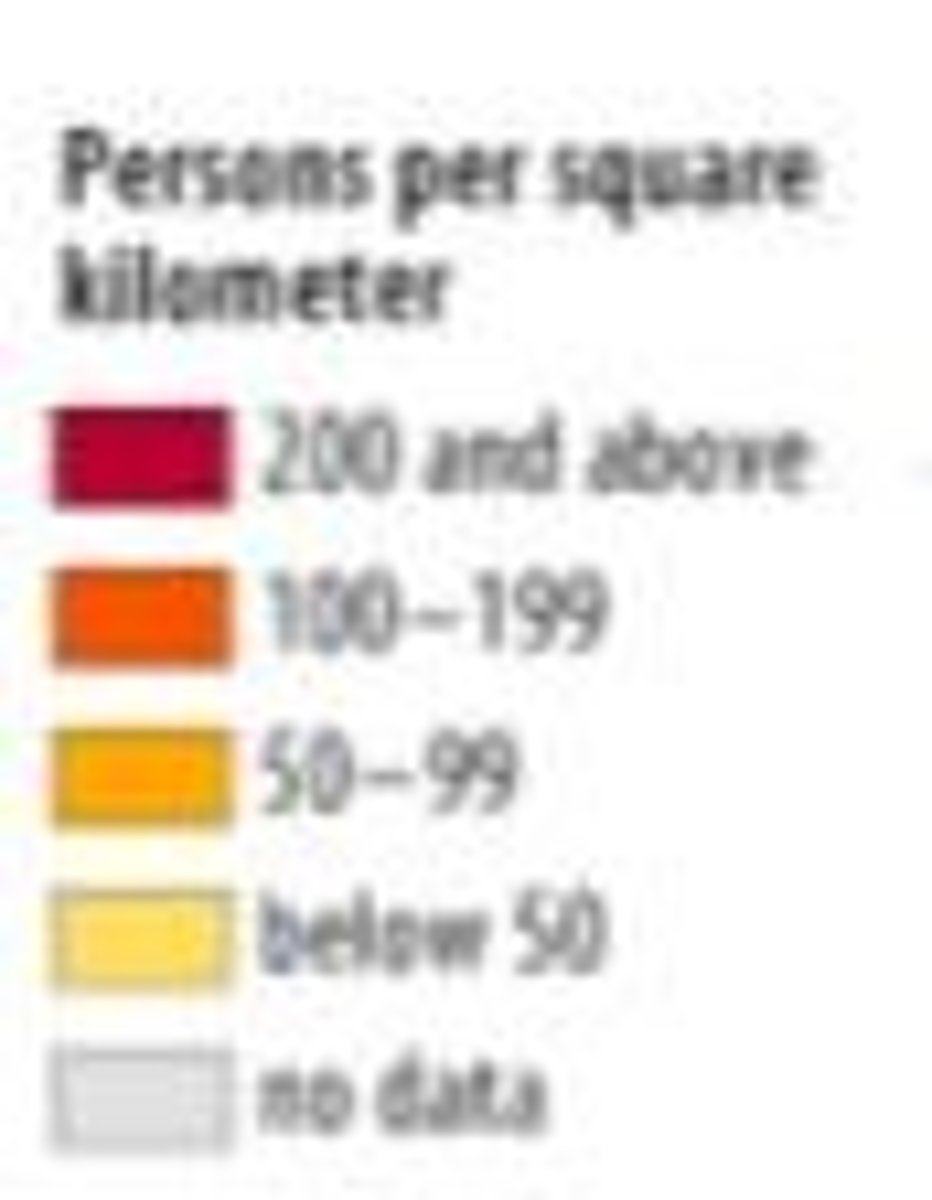
What does the physiological method of calculating population density use?
Total population divided by arable land area (sq. mi).
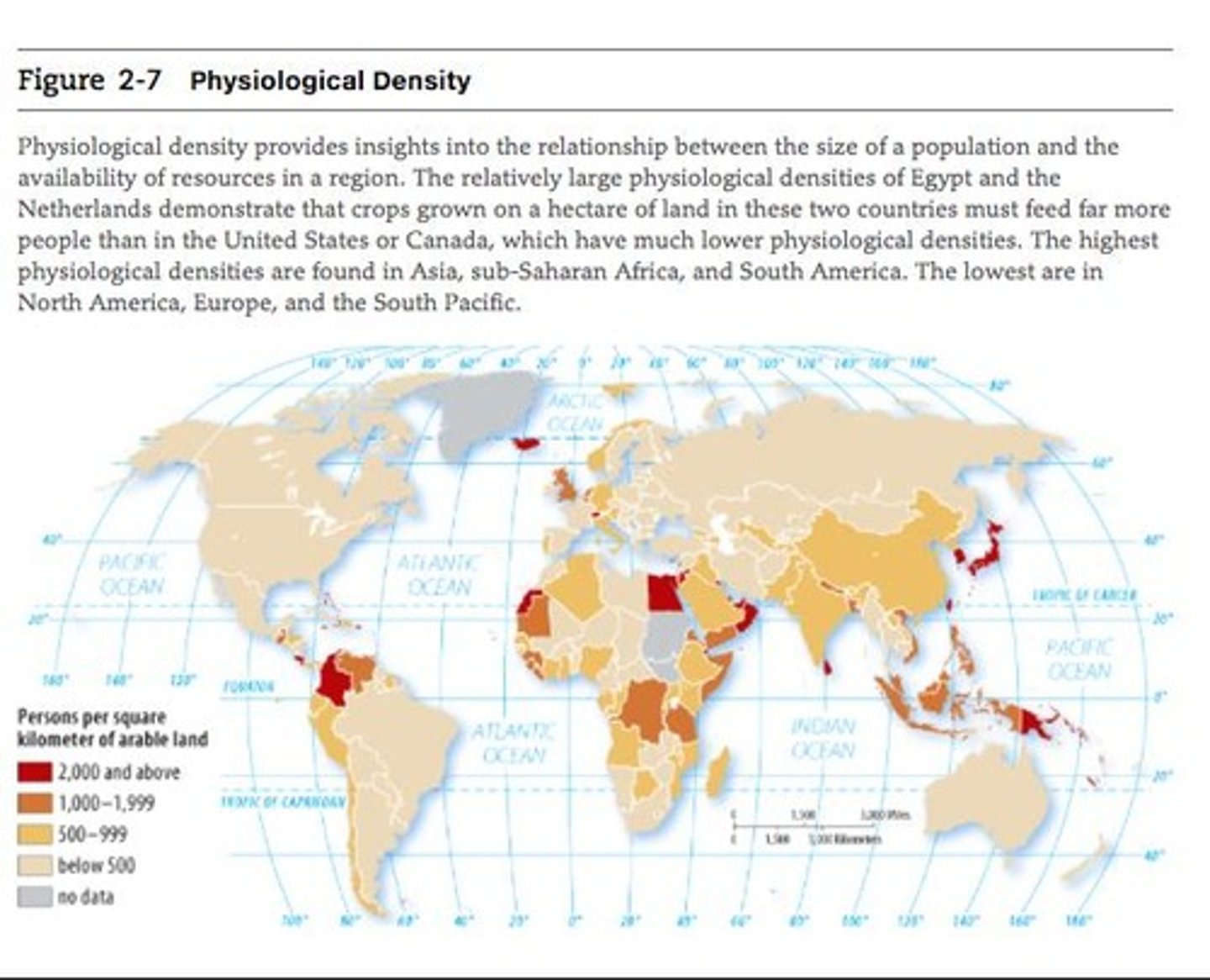
What does the agricultural method of calculating population density use?
Total number of farmers divided by arable land area (sq. mi) to assess farming populations.
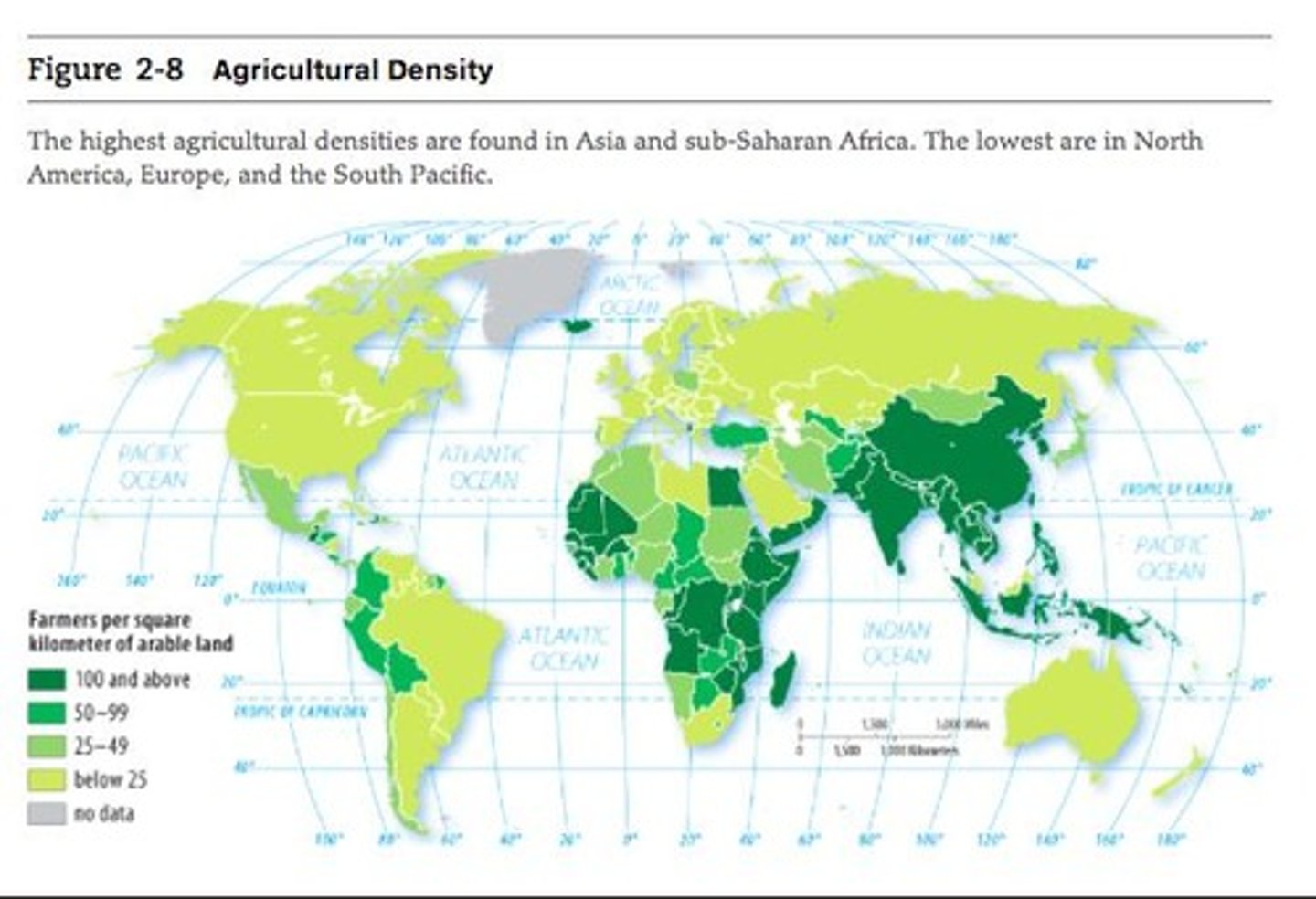
What is the significance of physiological density in understanding population distribution?
It reveals the pressure a population exerts on arable land.
What is ecumene?
The habitable areas of the world.
What are the '5 toos' that affect where people settle?
Too hot, cold, wet, hilly, or dry.
What economic factors influence population distribution?
Job opportunities and access to natural resources.
What social factors influence population distribution?
Housing availability, safety, access to transportation, and community belonging.
What political factors influence population distribution?
Government policies, laws, persecution, and war.
How does population distribution affect economic development?
High density often correlates with lower wages and less access to services in dispersed populations.
What is the relationship between population density and environmental sustainability?
High density can lead to resource depletion and environmental degradation.
What case study illustrates economic conditions prevailing over environmental limitations?
Norilsk, Siberia, where harsh weather is outweighed by nickel deposits.
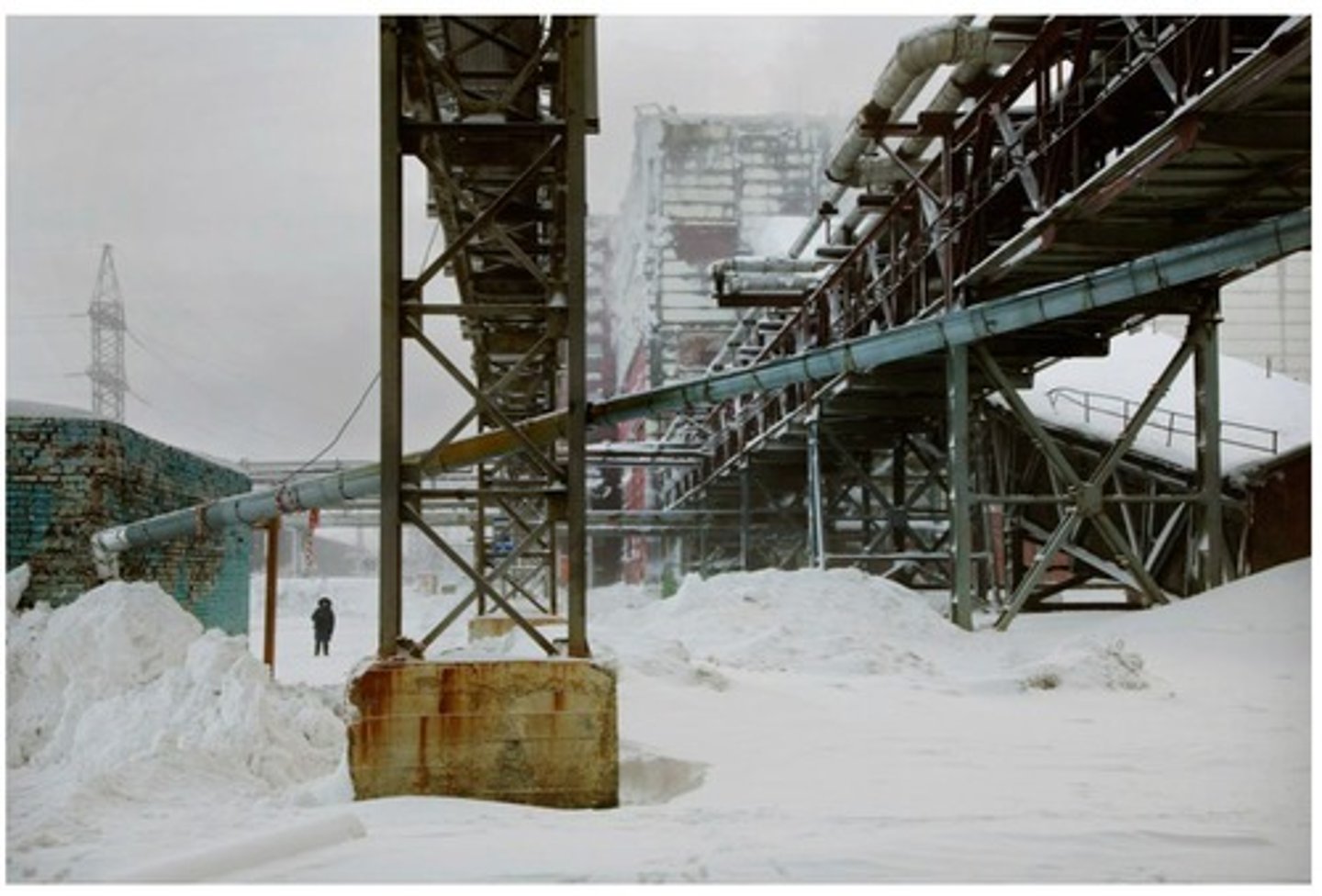
How does population density change our understanding of economic development?
High physiological density indicates lower levels of economic development.
What percentage of China's population lives in the Eastern region?
94%.
What is one consequence of uneven population distribution?
Uneven development across regions.
What is the impact of redistricting on population representation?
It adjusts electoral districts to maintain roughly equal population sizes.